Plaster stone over wall and doorway: Making a new place carry an historical atmosphere can be successful with furniture, accents and art; but going a bit further and creating the illusion that the actual building is an old stone block edifice that had been incorporated into the new construction is an entertaining step further.
Design
DOUG DANFORTH
BAS
RELIEF
PORTFOLIO:
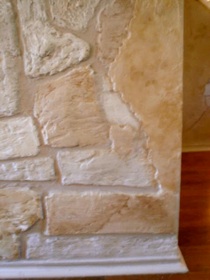
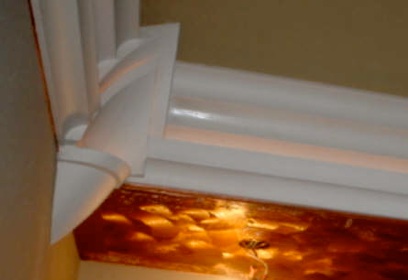
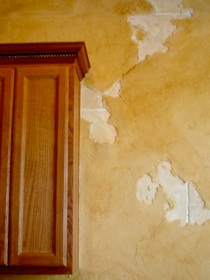
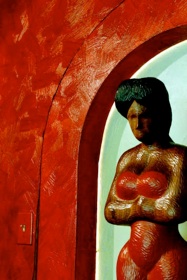
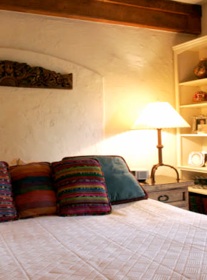
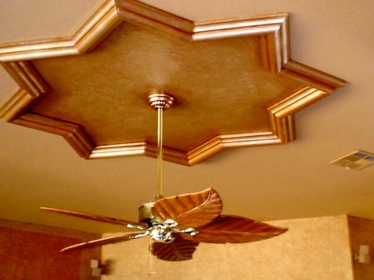
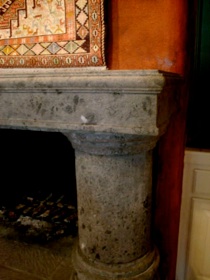
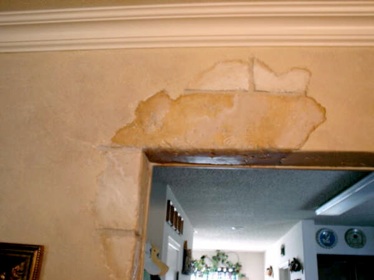
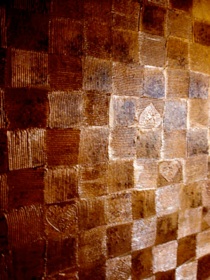

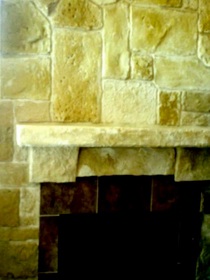
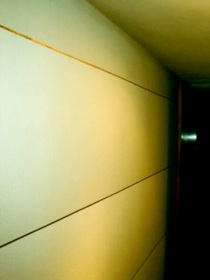
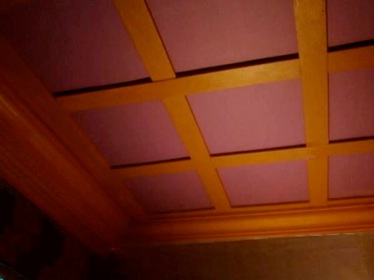
Deco dual moldings and cornice: Using light to enhance shape is not a new idea, but creating light around shapes in an area where they usually are not found is an unexpected turn. Dimmable accent light inside crown molding imaginatively helped bring a very high ceiling into scale.
Display arch: One entire wall of this room was glass, and the brightness could overpower any space, but adding texture and color over the surfaces opposite helped diminish the glare, and even used the brightness to accent wonderful art. Whisked surface texture that was colored and glazed to enhance the markings created a rhythm of refractions.
Adobe wall: Applying a layer of almost dry-mixed plaster gave a texture that was coarse yet classic. Catching light from the side, it needn’t be deep, as the wonderful texture was only a quarter of an inch thick. The pale color completed the rustic appeal.
Antique Italian kitchen: Making a plaster-covered block wall out of new gypsum board takes only a few necessary strategies: To use the technique sparingly, yet balanced; and making it appear in expected locations of architectural stress such as over doorways and at corners. The blocks are carved into the gypsum, and plaster is applied carefully to appear as a second layer.
Star medallion: A vast ceiling allows for such rich accenting, both as a spatial break and as a fixture enhancement. The fan in this room was almost the first element seen when entering from any other room, so what the heck, play it up.
Cantera negra fireplace: Changing the period of history that a room reflects was done with altering only one element. The focus of the room was and is the fireplace, and changing that one element changed the entire room. The texture of the new mantle had to match the texture of the existing columns or the illusion would have failed.
Combed basket weave: Maintaining a level and plumb application was the most difficult part of combing this texture into the surface of the wall. The wall was a short five-foot wide space, and had light entering from both sides, so the light refraction was guaranteed. Opposite this wall was a set of drawers with heart-shaped porcelain pulls, so the heart shapes were added lightly over the basket weave design.
Fireplace mantles: A large room, angular and almost clumsy. Astone treatment at one end gave foundation, focus and perspective simplification in a potentially awkward room.
Horizontal stripes and recessed copper banding: The horizontal diminishing-hue 'stripes' surrounding the room up to the eight foot crown (see above ‘deco’) helped reduce the feel of the sixteen-foot overall height while at the same time giving proper focus at eye level. This wall pictured is the access hall which has a lower ceiling, but it demonstrates a good view of the technique. The metallic bands were formed by applying quarter-inch wide tape in several layers, over which was roller-coated a thick texturing paint on each side of the tape to leave elevated edges when the tape was removed. The illusion presented here is that the light-catching metallic bands appear to be quite recessed between the horizontal stripes, promoting a classic deco appeal.
Woven grid ceiling: Applying a grid of one-by-six styro ‘boards’ in a subtle weave on a bedroom ceiling was all that was needed to give a rich and subdued feeling to the tall room. The ‘boards’ and ceiling were pre-painted, and the application was with glue only due to the very lightweight nature of the material. The only difficult part was careful measuring and application.

Site Photo Credits: Danny Warner, Carlos Flannery, Andrea Heitke, Doug Danforth.